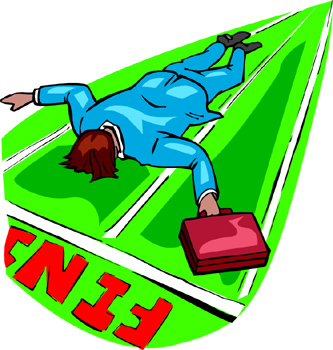B2B Sales: Avoiding Finishing Second
September 14, 2010
 If your organisation is involved in long, complex and resource-intensive sales cycles, there are few things more frustrating than finishing second to a competitor - except perhaps losing out to a prospect’s decision to “do nothing”. In both cases, great effort has probably been expended with nothing to show for it.
If your organisation is involved in long, complex and resource-intensive sales cycles, there are few things more frustrating than finishing second to a competitor - except perhaps losing out to a prospect’s decision to “do nothing”. In both cases, great effort has probably been expended with nothing to show for it.
So how can B2B sales organisations avoid coming second? If you observe the winning habits of consistently successful sales people and sales organisations, a handful of strategies seem to make the difference between winning and coming second.
Working with wet cement
Winning sales people, and winning sales organisations, tend to get involved in the buying cycle early on, while it is still possible to shape the prospect’s vision of what they need. One of my clients referred to this as “working with wet cement”.
It’s dramatically more difficult to influence the prospect’s agenda if you join the race late. Another organisation’s fingerprints are likely to be all over their vision of a solution, and no matter how professional your proposal, it’s going to be harder than it ought to have been to cross that finish line in first place.
Identify the compelling case for change
If you want to avoid finishing an honourable second to a decision to do nothing, you need to help your prospect identify a compelling case for change before you promote the superiority of your solution. There’s little merit in having the best answer to a problem that does not need to be solved.
What has disturbed your prospect’s status quo? What has caused them to start searching for a solution? If the problem has existed for a while, why is now the right time to deal with it? And what would happen, and who would be affected, if the current situation simply continued unresolved?
Show why you’re different before you prove how you are better
Your prospects are likely to be inundated with messages from your competitors all claiming to offer a better solution. And you know what? The prospect may well get to a point where the differences between the alternatives just don’t seem that significant - so they might as well buy on price.
You’re far better off establishing why you are different before you go on to prove how you are better. Take a contrarian perspective. Provoke your prospect to think differently. Help them see the situation through a fresh and clearer pair of eyes.
If you’re going to lose, lose early
Above all, you must qualify intelligently: Qualify that the problem is real and the need is urgent. Qualify that the people you are talking to have the power to effect change - or can connect you to those who can. And qualify that the prospect sees something uniquely valuable in your proposition.
If you can’t achieve this, you’re almost always better off detaching yourself from the situation politely and professionally and investing your scarce sales efforts in finding and winning a better opportunity.


Comments